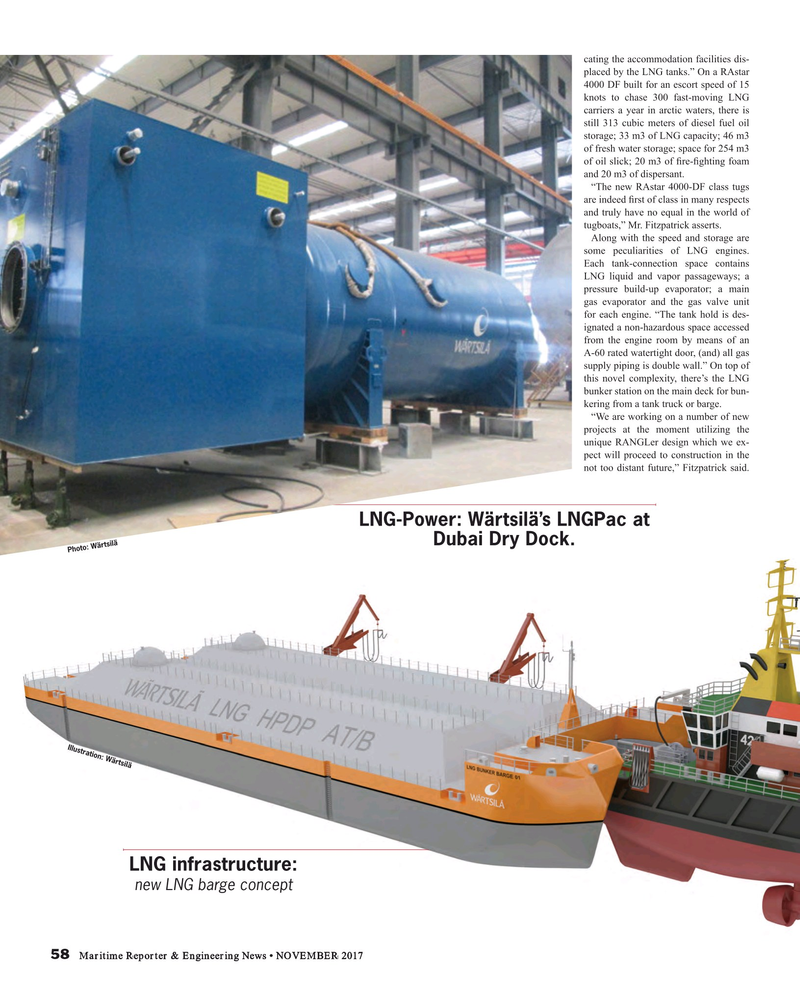
Page 58: of Maritime Reporter Magazine (November 2017)
The Workboat Edition
Read this page in Pdf, Flash or Html5 edition of November 2017 Maritime Reporter Magazine
cating the accommodation facilities dis- placed by the LNG tanks.” On a RAstar 4000 DF built for an escort speed of 15 knots to chase 300 fast-moving LNG carriers a year in arctic waters, there is still 313 cubic meters of diesel fuel oil storage; 33 m3 of LNG capacity; 46 m3 of fresh water storage; space for 254 m3 of oil slick; 20 m3 of ? re-? ghting foam and 20 m3 of dispersant.
“The new RAstar 4000-DF class tugs are indeed ? rst of class in many respects and truly have no equal in the world of tugboats,” Mr. Fitzpatrick asserts.
Along with the speed and storage are some peculiarities of LNG engines.
Each tank-connection space contains
LNG liquid and vapor passageways; a pressure build-up evaporator; a main gas evaporator and the gas valve unit for each engine. “The tank hold is des- ignated a non-hazardous space accessed from the engine room by means of an
A-60 rated watertight door, (and) all gas supply piping is double wall.” On top of this novel complexity, there’s the LNG bunker station on the main deck for bun- kering from a tank truck or barge. “We are working on a number of new projects at the moment utilizing the unique RANGLer design which we ex- pect will proceed to construction in the not too distant future,” Fitzpatrick said.
LNG-Power: Wärtsilä’s LNGPac at
Dubai Dry Dock.
Photo: Wärtsilä
Illustration: Wärtsilä
LNG infrastructure: new LNG barge concept 58 Maritime Reporter & Engineering News • NOVEMBER 2017
MR #11 (58-65).indd 58 MR #11 (58-65).indd 58 11/5/2017 11:01:10 AM11/5/2017 11:01:10 AM

 57
57

 59
59
